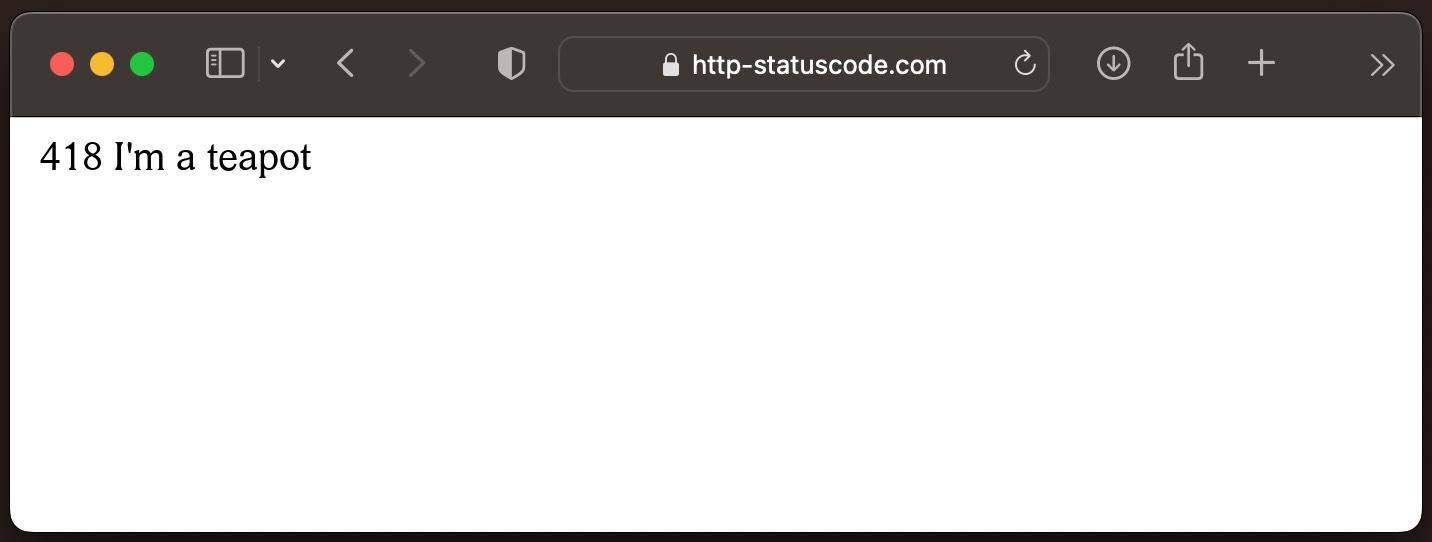HTTP Statuscode 418: Im a teapot - From joke to cult status

In the technical and often austere world of internet protocols, one code in particular stands out: the HTTP status code 418, nicknamed "I'm a teapot". But behind this seemingly nonsensical status code lies a rich history that illuminates the culture, humour and community of web developers.
1. A curious beginning: April Fool's Day by the IETF
It was 1 April 1998 when the Internet Engineering Task Force (IETF) decided to participate in the traditional joke day. The result was RFC 2324, the so-called "Hyper Text Coffee Pot Control Protocol" (HTCPCP). This protocol was intended as a joke and described how to control coffee machines and teapots over the web.
Within this humorous document, the status code 418 was introduced. It was meant to signal that a teapot was unable to brew coffee. A nonsensical but humorous notion that quickly gained cult status.
Loved by developers: the adoption of status code 418
Although never intended for actual use, status code 418 began to spread through the developer community. As a hidden message on websites or as a humorous message in software projects, it became an inside joke among web developers.
A serious twist: The debate over abolition
As the Internet evolved and standards were revised, the beloved status code was caught in the crossfire. Some members of the technical committees considered it superfluous and lobbied for its removal from the protocols. In their opinion, an official standard should not provide room for jokes.
The "Save 418" Movement: The community reacts
The potential removal of status code 418 led to an unexpected backlash. The "Save 418" movement was launched, with the aim of saving the beloved code. The arguments were varied: some saw it as an important cultural asset, others emphasised the importance of humour in technology.
The movement quickly gained momentum. Developers worldwide participated in online petitions, social media was flooded with hashtags like #Save418, and the code became a symbol of resistance to excessive bureaucracy.
The legacy of the 418: More than just a code
Regardless of the ultimate fate of the 418 status code, it has already established itself as an integral part of internet culture. It stands as a reminder that behind the bits and bytes of the web is a community of people who love what they do, have fun doing it, and can come together to protect what is important to them.
Conclusion
The HTTP status code 418 has gone through a journey from a simple April Fool's joke to a symbol of creativity, humour and sense of community in the digital age. It serves as a reminder that the internet, despite its technical complexity, is still made by people for people. It will be exciting to see how the story of this small but powerful status code evolves in the years to come.
Status code:
More blog articles:
HTTP status codes are essential for communication between servers and clients. They play a particularly important role in search engine optimization (SEO), as they signal to web crawlers such as Go...
Section 1: What is the xmlrpc.php file and where is it foundThe xmlrpc.php file is an important component in WordPress, one of the world's leading content management systems (CMS) for creating and ...
Web performance and the resulting user experience are central aspects for the success of any website. One significant factor that affects this performance is HTTP status codes, especially in the co...
